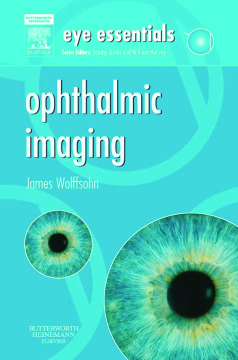
BOOK
Eye Essentials: Ophthalmic Imaging E-Book
James Wolffsohn | William Harvey | Sandip Doshi
(2008)
Additional Information
Book Details
Abstract
Eye Essentials is a major new series which provides authoritative and accessible information for all eye care professionals, whether in training or in practice. Each book is a rapid revision aid for students taking higher professional qualifications and a handy clinical reference guide for practitioners in busy clinics. Highly designed with synoptic text, handy tables, key bullet points, summaries, icons and stunning full colour illustrations, the books have rapidly established themselves as the essential eye clinic pocket books.
Ophthalmic Imaging explains and demonstrates the complete technology involved with imaging, from imaging chip and colour information capture to high-end instrumentation as this is critical to a full understanding of the potential and limitations of ocular imaging.
- Practical advice
- Evidence-based
- Highly designed, modern with icons, tables, synoptic text
- Very practical – with highlighted advice sections for patients, handy tables
- White coat pocket book
- Key opinion leaders for authors – not contributed so consistency of style and presentation
- Pulls the information together in one place very briefly
- Well illustrated
Table of Contents
| Section Title | Page | Action | Price |
|---|---|---|---|
| Front cover | Cover | ||
| eye essentials: ophthalmic imaging | iii | ||
| Copyright page | iv | ||
| Table of contents | vii | ||
| Foreword | ix | ||
| Preface | xi | ||
| Acknowledgements | xiii | ||
| Chapter 1: Importance of ophthalmic imaging | 1 | ||
| Chapter 2: Hardware | 7 | ||
| Light capture medium | 8 | ||
| Capture technology | 11 | ||
| Image transfer | 14 | ||
| Image storage | 18 | ||
| Resolution | 18 | ||
| Optical considerations | 18 | ||
| Lighting considerations | 20 | ||
| Printing | 25 | ||
| Chapter 3: Software | 29 | ||
| Patient image database | 30 | ||
| Data stored with the image | 31 | ||
| Viewing stored images | 32 | ||
| Control of computer hardware | 32 | ||
| Importing and exporting images | 33 | ||
| Image manipulation | 33 | ||
| Compatibility | 34 | ||
| Compression | 34 | ||
| Colour depth | 40 | ||
| Movie formats | 40 | ||
| Movie editing | 42 | ||
| Chapter 4: Anterior eye imaging | 47 | ||
| Slit-lamp biomicroscope system types | 48 | ||
| Objective image grading | 67 | ||
| Scheimpflug technique | 68 | ||
| Corneal topography | 69 | ||
| Confocal microscopy | 73 | ||
| Optical coherence tomography | 74 | ||
| Ultrasonography | 77 | ||
| Computerized tomography | 79 | ||
| Magnetic resonance imaging | 79 | ||
| Chapter 5: Posterior eye imaging | 81 | ||
| Fundus cameras | 82 | ||
| Retinal microperimeter | 91 | ||
| Scanning laser ophthalmoscopes | 92 | ||
| Retinal thickness analyser (RTA) | 97 | ||
| Optical coherence tomography | 98 | ||
| Scanning laser polarimetry (GDx) | 100 | ||
| Ultrasonography | 101 | ||
| Computerized tomography | 102 | ||
| Magnetic resonance imaging | 103 | ||
| Chapter 6: Imaging considerations | 105 | ||
| Tear film | 106 | ||
| Cornea | 107 | ||
| Anterior chamber | 108 | ||
| Crystalline lens | 109 | ||
| Optic disc | 111 | ||
| Macula | 111 | ||
| Retinal shape | 112 | ||
| Retinal features | 112 | ||
| Chapter 7: Teleophthalmology | 115 | ||
| Transfer of information | 117 | ||
| Security | 118 | ||
| Remote diagnosis | 118 | ||
| Telemedecine and the law | 119 | ||
| Standardization | 123 | ||
| Diagnostic accuracy and reliability | 124 | ||
| In conclusion | 125 | ||
| Glossary | 127 | ||
| References | 153 | ||
| Subject Index | 163 |
